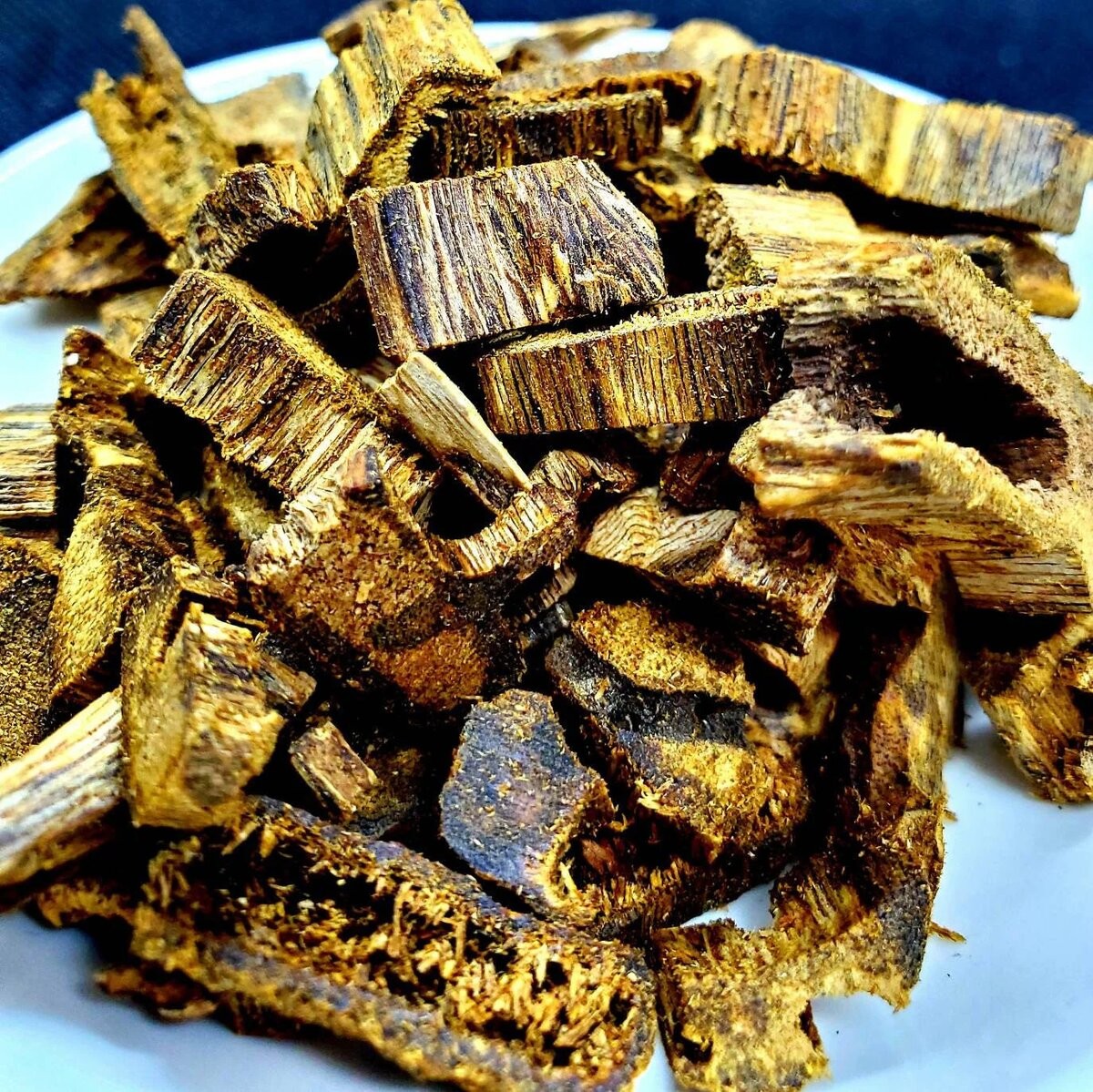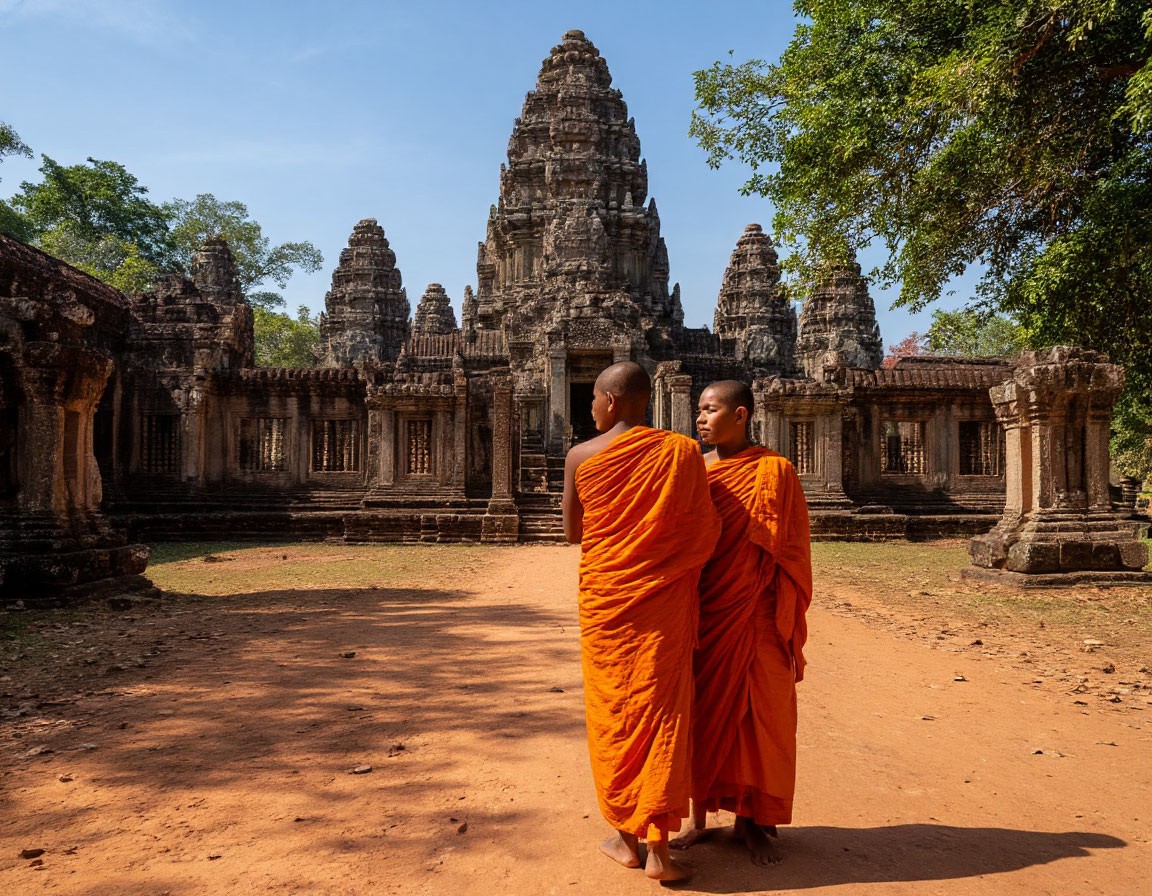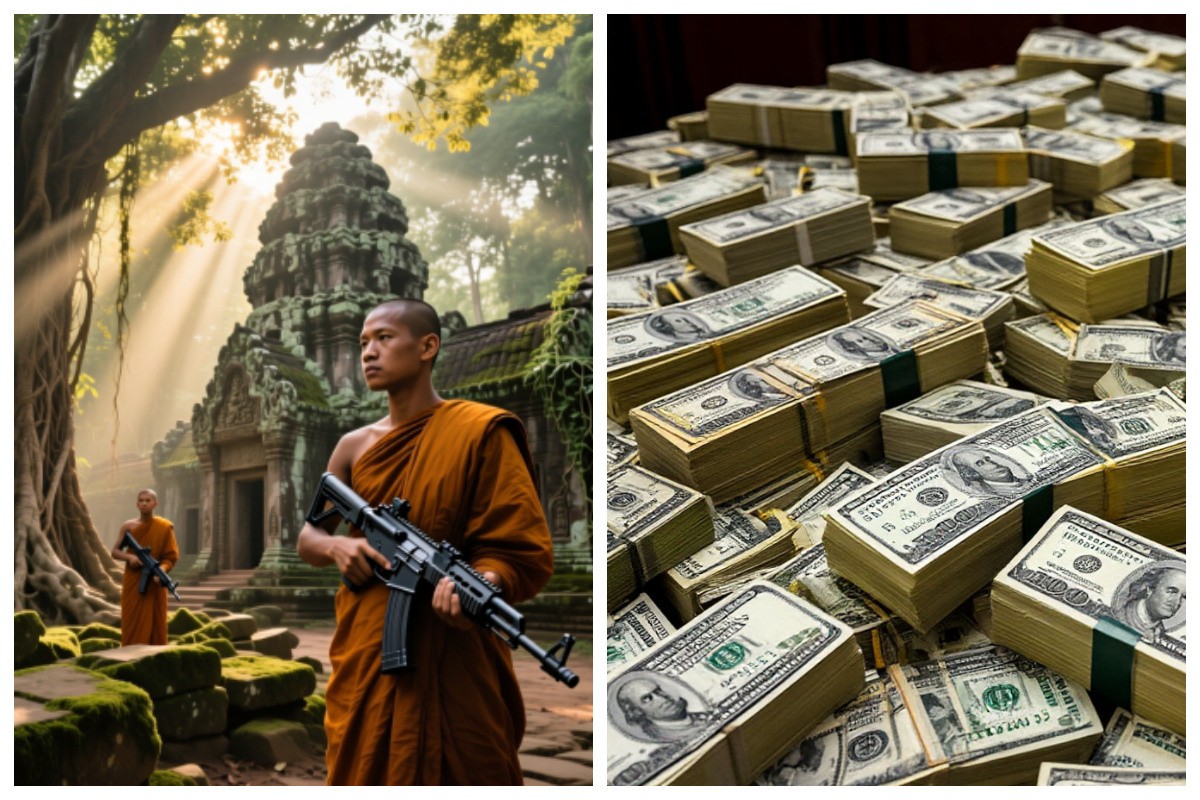A Tree Worth Over a Billion Dollars Guarded by Monks with Automatic Weapons
In the jungles of Southeast Asia lies a treasure coveted by collectors around the world. Imagine: an ordinary-looking piece of wood can be worth as much as a luxury apartment in central Moscow. Sounds like a fairy tale? It isn’t. This wood is kinam, and it really exists. But finding it is like winning a billion in the lottery — and the odds are even slimmer. Kinam’s story starts with an ordinary agarwood tree. It grows in the tropical forests of Vietnam, Indonesia, Cambodia, and Myanmar. The tree itself is unremarkable — light wood, almost scentless. But sometimes magic happens. Or rather, misfortune for the tree that becomes fortune for its future owner. When a special fungus enters the trunk, an incredible transformation begins. The tree fights back by producing a protective resin. Thick, dark, aromatic resin. Year after year, the resin permeates the wood, changing its structure and its scent. This process can stretch across decades, even centuries. The older the infected tree, the more valuable it becomes. "Predicting which exact tree will become the bearer of sacred resin is completely impossible. It’s like Russian roulette, only the stakes are measured in millions of dollars," said the kinam hunters. "Try to imagine the smell, in which notes of vanilla, flowers, musk, fruits, and amber resonate together — so harmoniously that leading perfume houses have been trying to recreate it for years. And they fail."

From an Ordinary Agarwood Tree to a Coveted Treasure How Kinam Is Formed and Why Its Scent Defies Replication
The scent of real kinam cannot be synthesized. Nature created the perfect perfume that people have not yet managed to reproduce in a laboratory. When you ignite a small kinam shard, the aroma unfolds in full — complex, multidimensional, mesmerizing. This is why the wood is pursued not only by luxury cosmetics producers. In Buddhist temples, kinam has long been used for incense. Monks believed the smoke from burned wood opened the path to the divine. The hunt for kinam escalated once the world learned that a single infected tree could be worth a fortune. In Southeast Asia, forests were cleared in vast areas as treasure seekers hoped to find at least one coveted tree among thousands of ordinary ones. Some farmers began growing agarwood trees on plantations and deliberately infecting them with the fungus. Yet there is a catch: such plantation wood costs tens of times less. Because plantation wood is felled after a few years, while true wild kinam forms over centuries. The difference is clear. It’s like natural honey versus sugar syrup. "Such ‘farm kinam’ has value too, but it is thousands of times less valuable than wood formed by nature."

The Billion-Dollar Price Tag and the Sacred Guardianship: Markets, Monks, and a Moral Dilemma
Ten grams of quality kinam can be sold for one hundred thousand dollars. Read that correctly — ten grams! This is less than a tablespoon. "Here’s what these precious pieces of wood look like" (images). In Shanghai, two kilograms of kinam wood sold for almost eighteen million dollars. Simple math shows: a kilogram cost the buyer nine million. There’s an even more striking story: a piece of kinam weighing sixteen kilograms and around six hundred years old was sold for twenty million dollars. For a tree that used to just grow in a forest! In the Cambodian temple Wat Bang Kradan, a special specimen is guarded around the clock by both monks and soldiers with automatic weapons. Japanese businessmen offered the temple twenty-three million dollars. The abbot refused, because for the temple this is not just wood — it is a sacred relic, a spiritual value that cannot be measured in money. For monks, everything in the temple and around it carries an incomparable value. Even though twenty-three million is a powerful argument, the abbot remained steadfast. Gold is mined every day. Tons of metal are extracted from the earth, melted down, and sold. Yes, it is expensive. But there is a lot of it, and there will be more. Kinam is different. It cannot be grown in a year or two. It cannot be ordered or created artificially. One can only wait — decades, or even centuries — for nature and chance to create another masterpiece. Kinam is a rarity in its pure form. It is a lottery where one of tens of thousands wins. It is a material born from illness, time and serendipity. That is its magic. Kinam unites nature, mysticism, human passion for beauty, and, of course, ancient greed. It symbolizes a luxury that cannot be bought simply — only if you’re incredibly lucky. Somewhere in the jungles right now, another tree is growing that, in a century, could become someone’s fortune. But no one knows where exactly. And that is the essence. Would you sell such a tree for twenty-three million dollars if it came to you as an inheritance? Or is spiritual value more important than any money?

